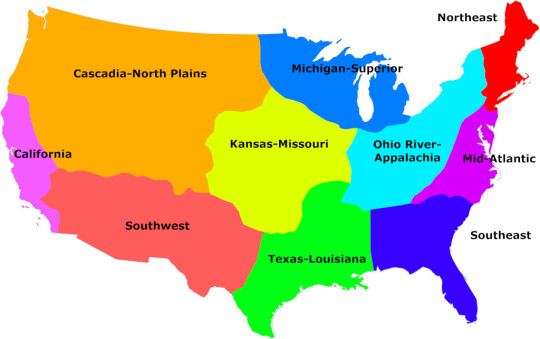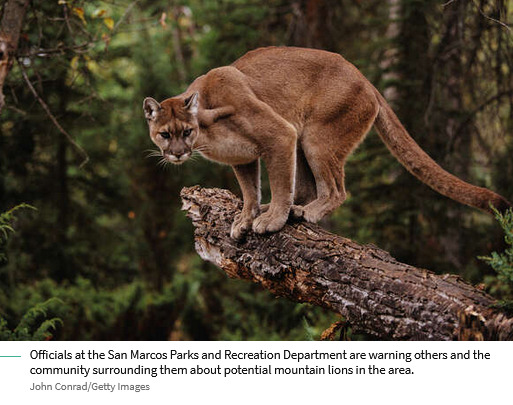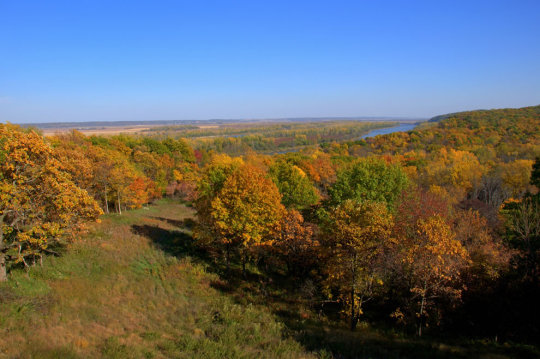#southeast missouri state
Text
Southeast Missouri State: 2022-23 Ohio Valley Men's Basketball Champions

EVANSVILLE — Southeast Missouri State men’s basketball coach Brad Korn shared a teary-eyed embrace with his parents. After an emotional 89-82 overtime win over Tennessee Tech in the United Fidelity Bank Ohio Valley Conference Tournament championship, all the family could do was shed joyful waterworks. That clinched SEMO’s first NCAA Tournament berth in 23 years and the SEMO faithful showered the players and coaches with praise.
At long last, and after four games in as many days, the wait was over. A timeline concluded with a story fitting enough for tears.
“You don’t do anything on your own,” the third-year coach said. “They get to share in that moment as well. I heard a long time ago, that surround yourself with amazing people (and) you’ll be surprised how far they can take you. I know I’m extremely blessed with these guys, this university, my family.”
The emotions of the night can’t be summed by the numbers. The six lead changes and five ties don’t come close to showing why a family cried in the stands. The Golden Eagles were about one shoe size away from snapping their 60-year danceless run.
Fifth-seeded SEMO took a two-point lead with 2.2 seconds remaining in front of 1,728 fans at Ford Center, leaving TTU needing a miracle it was painfully close to achieving. Jaylen Sebree chucked a Hail Mary pass to Diante Wood, who turned and hit an off-balance shot he thought was for the win. It was a similar play to that which ended Eagles’ coach John Pelphrey’s playing career 31 years prior.
Bucket, but his foot was on the 3-point line — “buzzer tier,” Korn called it. He sent TTU to overtime instead of the dance. Korn’s tears were nearly for a loss and Tech’s wait was almost over.
SEMO players were in tears but quickly needed to dry them. There was still overtime.
“They said, ‘Hey, remember this feeling. We’ve got five minutes to not feel this way,’” Korn said of Phillip Russell, Chris Harris and Dylan Branson. “I give them all the credit in the world for that and having the perseverance and the grit and the toughness to get it done.”
Tears fell again, but for joy and accomplishment on the Redhawks’ end. Wood watched from the opposite baseline after being an inch from ending a generational waiting period.
“I wanted to soak it all in, see how it felt, the pain,” Wood said. “(I can) come back next year, know about the feeling. Don’t want to be in that position again.”
Four games in four days. Austin Peay in 2016 was the only other team to win the OVC tournament after playing on opening night. The odds were against SEMO. Korn knew it but presented a challenge to his team before departing for Evansville.
Believe they can win the championship. Pack for four days.
Those were the options, or the players were instructed not to board the bus. That resulted in a 23-year wait ending and the Redhawks heading to March Madness.
“The guys have had a calmness, a steadiness about them all week,” Korn said. “The moment was not too big.”
“Everybody always had the right attitude,” Harris said. “We don’t want to be the outlier. It’s been so long since we actually won a championship and we see other teams winning championships all the time, so figured it’s our turn to step up.
It feels good to bring a basketball championship back home.”
A daunting task lies ahead for Korn and his Redhawks. They’ll likely be paired as a 16-seed against one of the tournament favorites or in the First Four to have the chance at playing one of the top teams. But Korn has experienced the Madness, albeit as an assistant at Kansas State.
“The balls are different, the floor is different, the arena — everything is different,” Korn said. “It’s going to be different coaching in the NCAA Tournament than it was as an assistant.
“This is what we do. This is what these guys do. To be able to have that, these guys are going to be able to see and experience, it’s at a different level. You literally walk around like royalty, people treat you so well. I’m looking forward to it.”
Amidst all the celebration, cheering and jubilation, it could be easy to forget how close it was to going the other way around. An inch, a shoe size, a step — one of those things changing is the difference between SEMO going to the tournament and watching the opposition celebrate; between tears in celebration and those in agony.
In essence, it was everything college basketball is supposed to be.
“If that’s not the definition of March Madness,” Korn said, “I don’t know what is.”
0 notes
Text

Southeast Missouri State Softball
#Southeast Missouri State University#SEMO#SEMO Redhawks#softball girls#college softball#athlete#female athletes#college athlete#college girl
58 notes
·
View notes
Text
it drives me crazy how every time some random pundit pushes the "Don't Go To Some Snobby Elite Private School, Go To A Salt-Of-The-Earth Public School Instead" line:
1) they themselves invariably went to a Snobby Elite Private School and materially, obviously benefited from this (yet are somehow oblivious to that fact!), and
2) the "salt-of-the-earth" public school they choose to name is, like: university of michigan. or, university of north carolina. y'know, internationally well-regarded schools whose tuitions are just as bonkers & just as hard to get into if you're applying from out of state. like come on
18 notes
·
View notes
Text

who up preserving that history?
Image credits to Kent Special Archives and Collections at Southeast Missouri State University
#history#southeast missouri state university#architecture#architectdesign#university architecture#museums#archives#special collections
7 notes
·
View notes
Text
Junior occupational therapy major and Delta Delta Delta (Tri Delta) Homecoming chair Mikayla Beachle organizes the pomping and painting supplies in the basement of the Tri Delta off-campus house. "It's rewarding to just see everybody working together," Beachle said.
#trideltasemo#Southeast Missouri State University#SEMO#Cape Girardeau#Delta Delta Delta#TriDelta#Tri Delta#DELTA DELTA DELTA#Phi Mu Chapter#ΔΔΔ#sorority news#sorority#sororitygirls#sorority girls#sororitylife#sorority life#sisterhood#greek life#go greek
0 notes
Text
The United States should go back to having thirteen states
On the basis that the 13-star flag was the best version, and that 50 is just too many dang states, I present my proposal for a 13-state United States of America. State names are placeholders only; presumably the inhabitants of these states would want to name them something different.
State boundaries are intended to attempt to respect both geographical features and approximate internal cultural borders of the United States, keeping contiguous regional cultures more or less grouped (e.g., the Ozarks are mostly within Texas-Louisiana; all of New England is in the Northeast; the Piedmont region is entirely within the Mid-Atlantic state, etc.). I have also tried to reduce the insane population disparity between states as much as was reasonable; but since the three non-contiguous states, Alaska, Hawaii, and Puerto Rico, are necessarily culturally and geographically distinct, they are kept as separate states. Also since they're each individual states with their present borders, I was lazy and only drew the 10 contiguous states.

The thirteen states are:
Northeast: About 34 million inhabitants. Capital: Boston; House delegation: 42 members; Senators: 10; EC votes: 52
Mid-Atlantic: About 41 million inhabitants. Capital: Richmond; House delegation: 51 members; Senators: 12; EC votes: 63. Contains the national capital (Washington-D.C.)
Ohio River-Appalachia: About 39 million inhabitants. Capital: Wheeling; House delegation: 48; Senators: 12; EC votes: 60
Southeast: About 44 million inhabitants. Capital: Jacksonville; House delegation: 54; Senators: 12; EC votes: 66
Michigan-Superior: About 37 million inhabitants. Capital: Green Bay; House delegation: 46; Senators: 10; EC votes: 56
Kansas-Missouri: About 24 million inhabitants. Capital: Kansas City; House delegation: 30; Senators: 6; EC votes: 36
Texas-Louisiana: About 40 million inhabitants. Capital: Shreveport; House delegation: 50; Senators: 12; EC votes; 62
Cascadia-North Plains: About 26 million inhabitants. Capital: Idaho Falls; House delegation: 32; Senators: 8; EC votes: 40
California: About 41 million inhabitants. Capital: Sacramento; House delegation: 51 members; Senators: 12; EC votes: 63
Arizona-New Mexico: About 19 million inhabitants; Capital: Albequerque; House delegation: 24; Senators: 6; EC votes: 30
Alaska: About 730,000 inhabitants. House members: 1; Senators: 1; EC votes: 3
Hawaii: About 1.4 million inhabitants. House delegation: 2; Senators: 1; EC votes: 3
Puerto Rico: About 3 million inhabitants. House delegation: 4; Senators: 1; EC votes: 5.
Total House size is 435, total Senate size is 103, and the total number of EC votes is still 538.
(Obviously in principle I would support abolishing both the Senate and the Electoral College, but if for some reason you were going to keep them, I think at minimum you would have to reform the whole "one state, two senators" rule, ergo I have gone for a form of proportionality here, although not so proportional as House delegations.)
102 notes
·
View notes
Text
Southeast Poll
Mid-Atlantic Poll
Northeast Poll
Rocky Mountains Poll
Southwest Poll
Pacific Northwest Poll
Non-Contiguous Poll
#poll#polls#spooky#creepy#america#americana#ohio#michigan#wisconsin#indiana#illinois#missouri#iowa#minnesota#kansas#nebraska#south dakota#north dakota
60 notes
·
View notes
Text
For the second week in a row, Republicans in state legislatures are making the interesting choice of fighting for child marriage. In Missouri, where children 16 or older can marry with parental permission, a bill to prohibit anyone under age 18 from getting a marriage license easily cleared the Republican-controlled Senate 31 to one last month. But now, the bill can’t get out of committee in the state House because seven out of 14 committee members are House Republicans who oppose the bill.
Those opponents include Rep. Hardy Billington (R), who insists without any evidence or logic whatsoever that banning child marriage will lead to a spike in abortions, even as abortion is totally banned in the state. “My opinion is that if someone [wants to] get married at 17, and they’re going to have a baby and they cannot get married, then chances of abortion are extremely high,” he told the Kansas City Star this week. Earlier this week, I also had to write about a different Republican lawmaker in New Hampshire who used the same argument against a bill to ban child marriage. This doesn’t make sense—if someone of any age is pregnant and doesn’t want to be, they’ll probably seek abortion care; this actually has nothing to do with marriage.
Another opponent of the bill, Rep. Dean Van Schoiack (R), told the Star that he opposes the bill because he knows someone who got married as a 17-year-old girl and is still married. “Why is the government getting involved in people’s lives like this?” Van Schoiak said.
Of course, if we’re bringing anecdotes and lived experience into this, I think I trust state Sen. Holly Thompson Rehder (R), who introduced the bill, a little more than Van Schoiack. “As a child that did get married, I would say I have a lot more insight to this issue than what he does,” Rehder said of Van Schoiack. Per the Star, Rehder got married at 15 to a 21-year-old, while her sister at 16 married her 39-year-old drug dealer. “The government does tell people when they can get married because we do have an age limit right now. The fact that [Van Schoiack] feels that it’s OK for a parent to make a decision for a child, that is a lifetime decision, is offensive.”
At this point, I would like to note that Rehder, who is currently running for lieutenant governor, might be right about this one thing, but is wrong about… pretty much everything else. Rehder supports the state’s total abortion ban and campaigned on a pledge to promote “the Trump Agenda” in her district in Southeast Missouri.
Nonetheless, if her bill doesn’t make it to a vote before the end of the legislative session on May 17, Rehder, who’s currently running for lieutenant governor, said she plans to introduce it as an amendment attached to another bill. She told the Star she’s confident that brought to the floor for a vote, the bill would have a majority…but right now, it’s simply being held up by its Republican opponents on committee.
Rehder’s bill comes after Missouri lawmakers in 2018 raised the state’s minimum marriage age to 16 with parental approval following backlash at the time over how many 15-year-olds in the state were being married. Currently, Missouri prohibits marriage between a minor and someone who is 21 or older, similar to the state’s statutory rape laws that prohibit sexual intercourse between someone 21 and older and someone under 17. This is all pretty needlessly confusing, but what isn’t confusing is that this is part of a pattern of Republican lawmakers going to bat for child marriage—from the state representative in New Hampshire who insisted that “ripe” and “fertile” teens should be able to marry, to a different Missouri lawmaker who last year declared that 12-year-olds should be able to get married because he personally knew someone who married at 12 (I mean, I hope they’re doing well today, but somehow, I, err, have my doubts…).
Experts and advocates against child trafficking have long pointed to how laws that permit child marriage put them at greater risk. The bill in Missouri’s legislature is notably part of a bipartisan effort, introduced by Rehder and Democrat Lauren Arthur. But despite Rehder’s best efforts, their bill is being blocked by members of her own party, even as Republican politicians have spent the better part of the last few years escalating their baseless and fearmongering smears of queer people as child sexual predators. As it turns out based on the political affiliations of every lawmaker fighting tooth-and-nail for child marriage (and, consequently, adult predators’ ability to marry children), the call might just be coming from inside the house—the Missouri state House, specifically.
#us politics#news#republicans#conservatives#gop#republican family values#child marriage#abortions#jezebel#Kansas City Star#Hardy Billington#Missouri#New Hampshire#Dean Van Schoiack#Holly Thompson Rehder#Lauren Arthur#2024
45 notes
·
View notes
Text
Warbler Showdown; Bracket 5.2, Poll 1


Belding's Yellowthroat (Geothlypis beldingi)
IUCN Rating: Vulnerable
Range: sedentary; endemic to Baja California Sur
Habitat: freshwater marshes with lots of reed, cat-tail, or bulrush; often along marshy river edges as well, and can sometimes be found along brackish coastal marshes or mangroves lining estuaries
Subspecies: 2
Kentucky Warbler (Geothlypis formosa)
IUCN Rating: Least Concern
Range: migratory; breeds in the southeast United States, from Missouri to Maryland, and Pennsylvania down to Louisiana; overwinters in Central America- the Yucatan and Belize down to Panama.
Habitat: Prefers wet forests with a dense understory, such as bottomland hardwood and other riparian woods. This is true both in breeding, migratory, and overwintering habitats.
Subspecies: None
Image Sources: Belding (Alan Van Norman); Kentucky (Matthew Addicks)
26 notes
·
View notes
Text
82 notes
·
View notes
Text
Big week for news about “mountain lions wandering back into historic habitat where they were once persecuted to extinction” in February 2023.
---
Central Texas:


Headline and screenshots from: Priscilla Aguirre. “Potential mountain lion sighting in San Antonio area raises awareness.” My San Antonio. 14 February 2023.
Excerpt from this article: Officials at the San Marcos Parks and Recreation Department are asking others and the surrounding areas to be cautious about potential mountain lions in Central Texas. Officials said the message comes after the department received a call about a potential sighting of a mountain lion at Upper Purgatory Creek Natural Area in San Marcos on Sunday, February 12. [...] In Central Texas, it’s extremely rare to see a mountain lion in person, according to a report from the San Antonio Express-News. [...] Only one mountain lion has been confirmed in Bexar County in the past decade, on November 24, 2013, according to TPWD. [End of excerpt.]
---
Great Plains and Nebraska:

Headline and screenshot from: Damon Bennett. “Nebraska mountain lion now looking for a name after 700-mile journey.” Lincoln Journal-Star. 16 February 2023.
Excerpt from this article: A Nebraska mountain lion that found itself in a sanctuary in Indiana after a 700-mile journey through four states is now looking for one last souvenir: a name. Back in the fall, the big cat made its way from the scenic Niobrara River valley all the way to suburban Springfield, Illinois, according to the GPS tracker that Nebraska Game and Parks had tagged it with a year prior. "A lot of people were watching him," said [the director of an “exotic feline rescue center”] in Center Point, Indiana, where the mountain lion has been since October. When the lion overstayed its welcome near Springfield, it was sedated by federal wildlife officials, who offered to return it to Nebraska. Nebraska declined.’ [...] "I'm incredibly impressed with this animal; he crossed both the Missouri and Mississippi rivers [...]." [End of excerpt.]
---
Ozarks and Missouri:

Headline and screenshot from: Julia Wilson. “Mountain lions in Missouri? We’re seeing more than usual this winter.” Columbia Missourian. 16 February 2023.
Excerpt from this article: Footage from a trail camera taken Jan. 3 confirmed that a roaming mountain lion made a rare appearance in northern Boone County. Since then, the Missouri Department of Conservation documented three additional sightings around the state last month — one in Callaway County, another in Montgomery County and a third that was hit by a vehicle south of St. Louis. Reports of mountain lions, also known as cougars, pumas and panthers, have increased over the past decade in the state. Between 2013 and 2022, a total of 65 were counted around Missouri. Compare that to the years between 1994 and 2006, when only 12 were spotted. [...] The animals may come from an established colony in the Black Hills, cross Nebraska and wander into Missouri, according to the Kansas Department of Wildlife and Parks. Missouri’s extensive forest coverage, which includes 35% of state acreage, then becomes an ideal destination for the animals. Mountain lions have roamed Missouri since pre-settlement times. Their range crosses the western hemisphere from Canada to southern Chile. [...] Although they are seen across the state, over half of all sightings have been documented within 40 miles of Mark Twain National Forest in southeast Missouri. [...] Trophy hunting by early colonists wiped out most of the population east of the Mississippi River. [...] Except for the recent encounter in Franklin County where a lion was hit by a vehicle, the last documented human contact occurred in December 2021 during another vehicle collision. [End of excerpt.]
---
For reference:

205 notes
·
View notes
Text

And now Republican Gov. Kristi Noem is banned from ALL tribal land in her own state.
The last holdout, the Flandreau Santee Sioux, have joined the other eight South Dakota tribes in banning Gov. Noem from their tribal lands.
South Dakota Gov. Kristi Noem is now banned from all tribal lands in her home state
All of South Dakota’s nine indigenous tribes have voted to ban Gov. Kristi Noem from their lands.
On Tuesday, the Flandreau Santee Sioux Tribe executive council ruled in favor of barring the Republican governor from its reservation.
In response to a request for comment on Wednesday, the Flandreau Santee Sioux Tribe sent a readout of its president’s interactions with Noem ahead of the vote. Flandreau President Tony Reider called an emergency meeting last weekend in response to Noem’s comments, according to the readout. The meeting was “contentious at times, as some members vocalized their opposition.” After that Reider set up a meeting with the governor’s office, which took place on Monday. That conversation was “respectful and productive.”
“President Reider informed the governor that a ban from our territories is imminent and requested that the Governor refrain from making future blanket statements that offend the tribes within the boundaries of the State of South Dakota, some of which depend on state services for the needs of their people. It was recommended that the Governor clarify her statements and issue an apology to all tribal nations for the misunderstanding,” the readout said. “Until such a time, the Executive Council and the people of the Flandreau Santee Sioux Tribe stand with our fellow nations.”
That vote bookended a ripple effect of tribes with reservations that stretch into South Dakota moving to prevent Noem from setting foot on their land, spurred by comments she made earlier this year. During a town hall, she argued that tribal leaders were profiting off of drug cartels in the state and prioritizing those cartels over parenting children on their reservations. Noem has since doubled down on saying Mexican drug cartels were rampant on Native American reservations in South Dakota.
Those comments sparked a domino effect of tribes denouncing Noem and voting to bar the governor from their lands. According to The Argus Leader of South Dakota, leaders of the Flandreau Santee Sioux had been receiving pressure from local citizens to do something in response to Noem’s comments.
This is not an insignificant amount of territory. It takes up almost a quarter of the state's total land area.
You can make out seven of the reservations on this map.

Actually one, the Lower Brule Sioux reservation, can be seen but isn't labeled. It's next to the Crow Creek Sioux reservation on the Missouri River. The Flandreau Santee Sioux reservation is less than 3 square miles in size. It's in the extreme east-central part of the state near I-29.
The tiny (population: 14,000) state capital Pierre (they pronounce it "peer") is in the middle of the state just below the red inscription South Dakota on the map above. Noem has to drive around the Lower Brule Sioux and Crow Creek Sioux reservations to the southeast of Pierre if she wants to get to the southeastern part of the state.
As for the two interstates in South Dakota, Noem has no problem on I-90. But the northernmost section of I-29 passes through the Lake Traverse reservation of Sisseton Wahpeton Oyate.
#kristi noem#south dakota#native americans#tribal lands#indian reservations#indigenous peoples#cricket#noem shoots puppies#animal cruelty#election 2024#vote blue no matter who
6 notes
·
View notes
Text



SEMO Softball
#Southeast Missouri State University#SEMO#SEMO RedHawks#college softball#softball girls#athlete#female athletes#college athlete#college girl#bikini#athletes in bikinis
312 notes
·
View notes
Note
If you get this, answer w/ three random facts about yourself and send it to the last seven blogs in your notifs. anon or not, doesn’t matter, let’s get to know the person behind the blog! 🩷
I'll give different answers.
While I won't specify where exactly, I live in southeast Iowa. It's acres, cows and gas-stations over here.
I've been all over the country. Arizona, two different islands of Hawaii, California, Texas, Missouri. Not every single state, of course; but I've moved around enough to say that I never really settled down in any of those places. I'm here to stay with Iowa, though.
At the risk of sounding incredibly self-pitying, I never really had friends growing up and even now some people that I'm friendly are just that. I was shy as a kid and, while I'm more out-going now, I've preferred being in my own head, "Lala Land 24/7" as some people say; between that and moving a lot, there wasn't much room to make friends during my childhood. Tumblr has helped me in quite a ways, though, and I'm glad I decided to join this platform and Ao3.
6 notes
·
View notes
Text

Taken in Indian Cave State Park southeast Nebraska over-looking the Missouri River Valley
9 notes
·
View notes
Text
U.S. Air Force 1st Lt. Michael Blassie was once known as the Vietnam War “Unknown Soldier”.
U.S. Air Force 1st Lt. Michael Blassie was once known as the Vietnam War “Unknown Soldier”.
On Memorial Day in 1984, a set of unidentified remains were interred in the Tomb of the Unknowns, alongside remains of service members from WWI, WWII and the Korean War at Arlington National Cemetery. Those “unknown” remains, later identified as Michael Blassie, became representative of those who remained unaccounted for in Southeast Asia.
On May 11, 1972, Blassie was flying an A-37B Dragonfly aircraft when it was hit by ground fire near An Loc, 60 miles outside of Saigon. His wingman witnessed an explosion and there was no indication that Blassie survived. Blassie was then listed as missing-in-action for more than a decade. He was 24 years old. Blassie’s remains were taken “home” to the United States in 1984 but they were not positively identified, and instead were interred at the Tomb of the Unknowns. Forensic technology was limited at the time, preventing positive identification.
Michael Blassie was born on April 4, 1948, in St. Louis, Missouri to George and Jean Blassie. He was the oldest of five children. In 1970, Blassie graduated from the U.S. Air Force Academy and went on to serve as a 1st Lieutenant with the 8th Special Operations Squadron in Vietnam.
Recovery of Blassie’s crash site took nearly six months after bone fragments, an ID card, and a radio were found at the crash site. While the remains found at the crash site were initially identified as Blassie’s, forensic miscalculations about the height and weight of the bones caused them to be reclassified as unknown and labeled “X-26.”
In a ceremony at Pearl Harbor in Hawaii on May 17, 1984, X-26 was officially classified as the remains of the “Unknown Soldier” from Vietnam and sent to the United States aboard the U.S.S. Brewton.
The remains were then sent to Travis Air Force Base on May 24, and arrived at Andrews Air Force Base the following day. Many Vietnam veterans, President Ronald Reagan, and First Lady Nancy Reagan visited X-26 as he lay in state in the U.S. Capitol Rotunda for three days. On Memorial Day, May 28, 1984, X-26 was escorted to Arlington National Cemetery. A funeral was held and President Ronald Reagan presented the Medal of Honor to the Vietnam Unknown. The President also accepted the interment flag at the end of the ceremony.
Ten years later in 1994, a former Army Green Beret Ted Sampley called the Blassie family and said he had written an article for the Vietnam veterans’ newsletter proving that Blassie was buried in the Tomb of the Unknowns.
...
At the request of the family, Blassie’s remains were removed from the Tomb of the Unknowns. On July 11, 1998, 1st Lt. Michael Blassie was buried with full military honors in Jefferson Barracks National Cemetery in Missouri.

4 notes
·
View notes